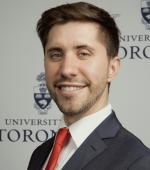


Theme
10JJ Selection for admission to Medicine
INSTITUTION
University of Toronto - Faculty of Medicine

The Medical College Admission Test (MCAT) is variously but commonly used for admission to Canadian medical education programs with eleven out of the seventeen faculties of medicine in the country requiring the full test or sections of it for admission.[i]
Though it only represents one of several evaluation criteria for invitation to interview, the intense competitiveness of medical school admissions make every component important and thus the MCAT presents an opportunity for a student to cognitively differentiate himself or herself. This high-stakes component of admissions meant to measure inate aptitude has ironically led to a significant and growing supply preparatory activity and material for students (i.e. books, online exams, question banks, private in-class courses, etc). However, little is known about the demand for this material evidenced by the number of Canadian students using preparatory material in general and their intensity of usage nor about the associated costs of preparation.
The value of preparatory material and activities is widely debated in academic literature. One study exemplifying the augmenting effect of preparation examined the Undergraduate Medicine and Health Sciences Admission Test (UMAT) in Australia and showed increasing odds of an interview and admission offer with every additional activity undertaken, underlining the importance of intensity of resource usage.[ii] This increased performance is argued to apply to both preparation for cognitive assessments[iii],[iv]and noncognitive assessments, such as situational judgment tests.[v]
Others would argue that preparatory material for admissions tests are marginally beneficial by only providing small benefits (i.e. <5%) in the science sections.[vi] Critics sharing this point of view would also put forward the point that though the increase is minuscule, should it benefit a student that they are not likely to have increased chances of academic difficulty while in medical school, signifying that admissions would still have resulted in the selection of capable medical trainees.
In all instances, an important question of equity is raised. If performance does in fact increase through preparation (and therefore the likelihood of admission), then students with access to capital would at the very least be less burdened by the costs of preparing and writing the MCAT. At its worst, the economic costs associated with preparing and writing the MCAT may present a real barrier for some students, leading to their relatively reduced use of preparatory material and courses and, possibly, to underrepresentation of socioeconomic diversity in Canadian medical schools. This mechanism may explain predictors of better performance on the UMAT being socioeconomic advantage.[vii] Similar questions of equity are raised in regards to limitations of geography and opportunity.[viii]
Another important consideration are the labour and capital resources being spent by students as they pursue these preparatory activities, regardless of whether they result in higher performance in admissions tests. Given that most students consider the amount of money spent as predictive of their eventual outcome[ix], the very existence of the MCAT introduces additional cost to students added to an increasing amount of student debt that may have impact on who decides to enter medical school or on the choice of residency.
The aim of this survey was to provide some answers to the first set of unknowns in the early part of this preamble. By asking an entering class of medical school trainees the material they used to write the MCAT, this research quantifies the number, types of resources, and economic cost incurred by students admitted to the medical degree program at the University of Toronto Faculty of Medicine.
[i] Should the MCAT Exam Be Used for MedicalSchool Admissions in Canada?
[ii] The impact of preparatory activities on medical school selection outcomes: a cross-sectional survey of applicants to the university of Adelaide medical school in 2007
[iii] Hausknecht, J. P., Halpert, J. A., Di Paolo, N.T., & Moriarty Ger-rard, M. O. (2007). Retesting in selection: A meta-analysis of coaching and practice effects for tests of cognitive ability. Journal of Applied Psychology, 92, 373–385.
[iv] Vandekerckhove, Lars, Coachign and the Flemish Medical Entrance Exam.
[v] Lievens et al, The Effects of Coaching on Situational Judgment Tests in High-stakes Selection
[vi] The effect of commercial coaching courses on performance on the MCAT
[vii] Socio-economic predictors of performance in the Undergraduate Medicine and Health SciencesAdmission Test (UMAT)
[viii] The impact of preparatory activities on medical school selection outcomes: a cross-sectional survey of applicants to the university of Adelaide medical school in 2007
[ix] Preparation courses for a medical admissions test: effectiveness contrasts with opinion
 Send Email
Send Email